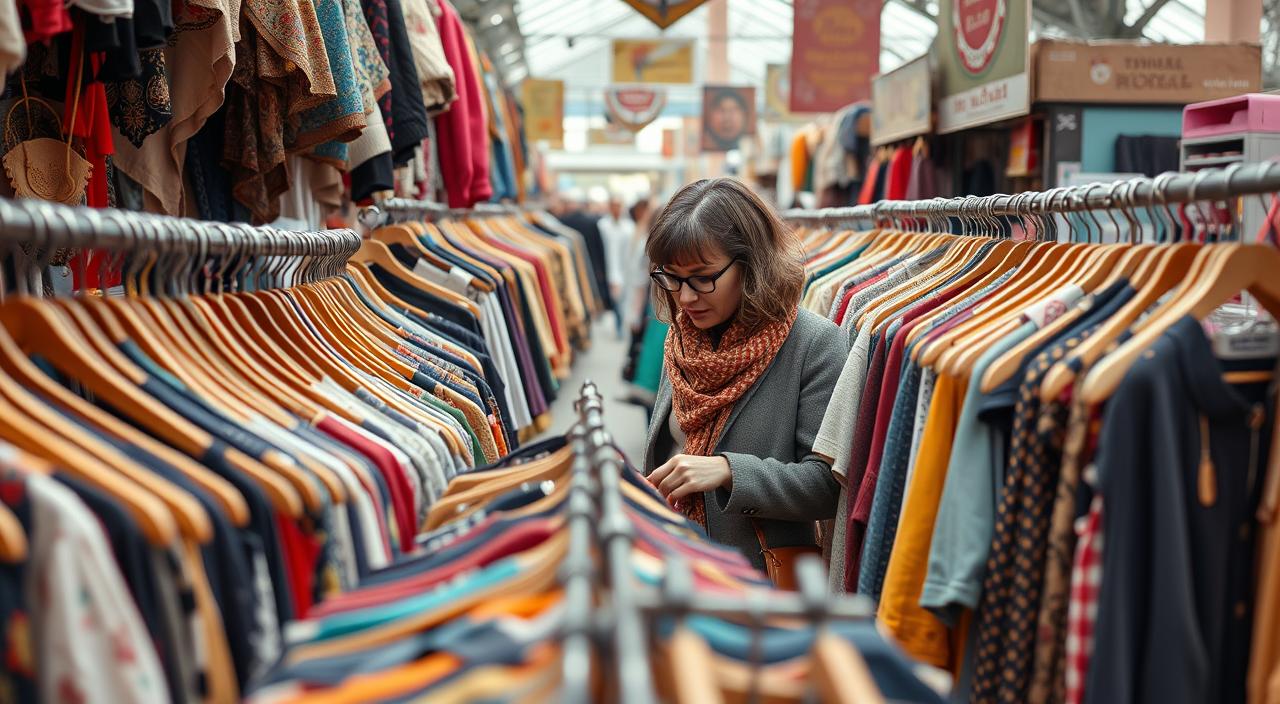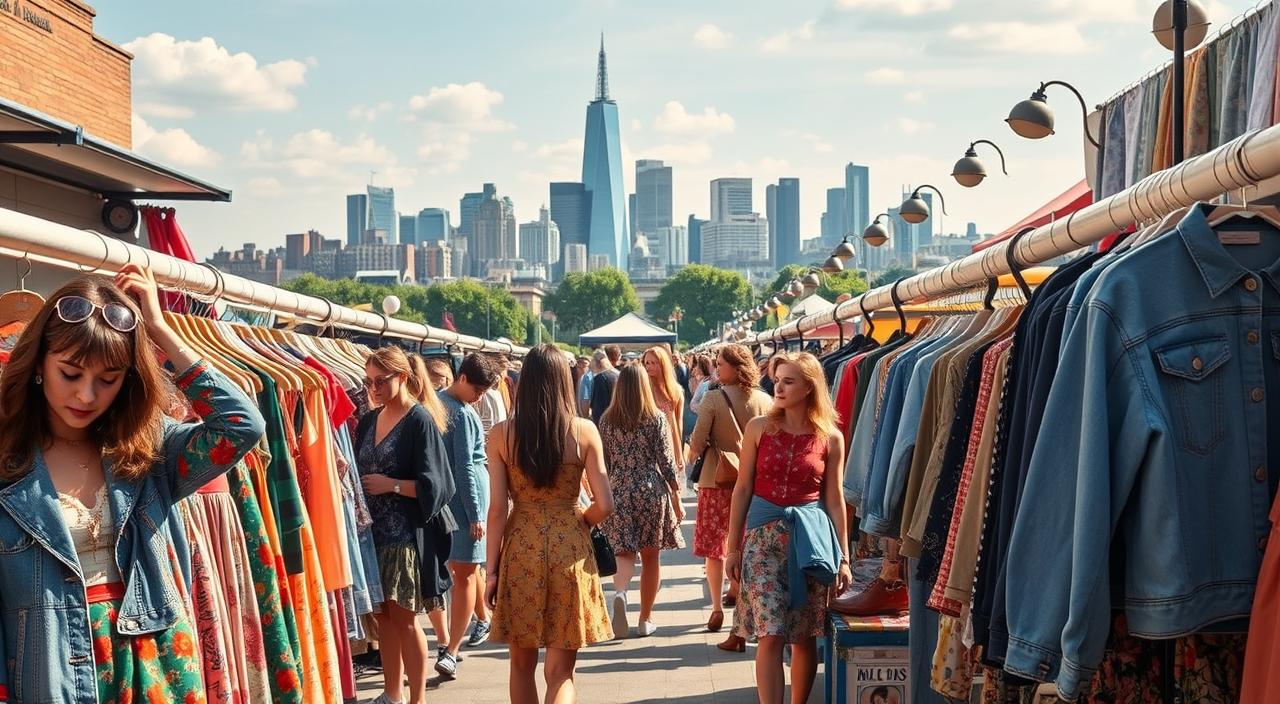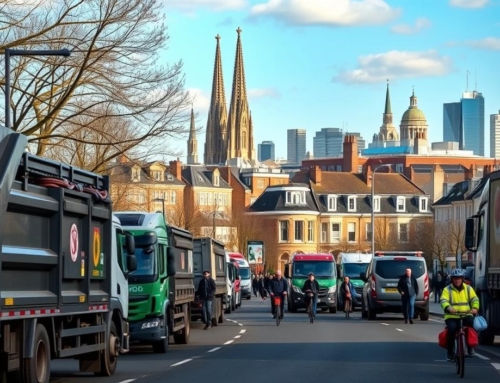In London, a vibrant fashion revolution is underway, led by Generation Z. These young trendsetters are embracing upcycling fashion and second-hand clothing, reshaping the way people perceive style and sustainability. By moving away from fast fashion, they’re prioritizing eco-friendly choices that blend individuality with environmental consciousness. This shift is not only transforming wardrobes but also challenging societal norms, making pre-loved clothing a celebrated choice rather than a necessity.

Key Takeaways
- Gen Z Londoners are pioneering sustainable fashion trends.
- Upcycling and second-hand clothing are gaining mainstream popularity.
- Environmental concerns drive the move away from fast fashion.
- Pre-loved fashion is now a symbol of style and individuality.
- Sustainable choices are rising among young, fashion-forward individuals.
The Rise of Second-Hand Style in the UK
The UK’s fashion landscape is undergoing a significant transformation, with second-hand clothing becoming a cornerstone of modern style. This movement is fueled by growing awareness of the environmental toll of fast fashion and a desire for more sustainable alternatives.
From Stigma to Style Statement
In the past, second-hand clothing was often associated with financial necessity. Today, it’s a bold style choice embraced by fashion-forward individuals. Social media platforms like Instagram and TikTok have played a pivotal role in this shift, turning pre-loved fashion into an aspirational trend. Influencers showcase unique finds, inspiring others to explore vintage fashion markets and charity shops for one-of-a-kind pieces.
Gen Z’s Influence on Sustainable Fashion
Gen Z’s tech-savvy nature has accelerated the popularity of second-hand shopping. Platforms like Depop allow users to browse thousands of pre-loved items, from sportswear to designer labels, at a fraction of the original cost. According to a BBC report, over 50% of second-hand clothing in the UK comes from charity shops, which fund various community programs. This synergy of style and social good resonates deeply with Gen Z, who prioritize sustainability in their purchasing decisions.
Why Gen Z Londoners Are Leading the Upcycling Revolution
Gen Z Londoners are at the forefront of the upcycling fashion movement, driven by their commitment to sustainability and proficiency in navigating online marketplaces. Their digital fluency and environmental values make them uniquely positioned to champion this trend.
Digital Natives and Online Marketplaces

Online platforms have transformed how young Londoners shop for pre-loved fashion. Sites like Reliked offer access to unique items from influencer wardrobes, often at discounts of up to 70% off retail prices. These platforms make it easy to discover high-end fashion without the premium price tag, appealing to Gen Z’s desire for affordability and individuality.
Sustainability as a Core Value
For Gen Z, sustainability isn’t just a buzzword—it’s a guiding principle. By choosing second-hand clothing, they reduce the demand for resource-intensive new garments. Social media fosters communities where young Londoners share upcycling projects and styling tips, reinforcing their commitment to eco-friendly fashion. This cultural shift is evident in the growing popularity of sustainable fashion blogs, which offer inspiration for creating unique looks.
Environmental Impact: Addressing Fashion’s Waste Problem
The fashion industry’s environmental footprint is a pressing issue. In the UK, the scale of waste is staggering, with millions of clothing items discarded weekly. Upcycling and second-hand shopping offer viable solutions to this crisis.
The UK’s Landfill Crisis
According to Oxfam, approximately 13 million clothing items end up in UK landfills each week. Fast fashion’s reliance on resource-heavy production processes exacerbates water pollution, chemical use, and carbon emissions. In contrast, second-hand shopping significantly reduces these impacts by reusing existing garments.
| Environmental Impact | Fast Fashion | Second-Hand Shopping |
|---|---|---|
| Water Pollution | High due to textile dyeing | Minimal, reuses existing items |
| Carbon Emissions | High from production and transport | Low, eliminates new production |
| Resource Use | Requires vast resources | Minimal, reuses existing garments |
Reducing Carbon Footprint
By extending the lifespan of clothing through second-hand purchases, consumers can lower their environmental impact. Gen Z Londoners are increasingly aware of these benefits, opting for pre-loved items during sales to maximize savings and sustainability. For more insights, check out this YouTube video on sustainable fashion.
The Benefits of Embracing Second-Hand Style in the UK
For Gen Z Londoners, second-hand fashion is more than a trend—it’s a lifestyle with financial, stylistic, and environmental advantages.
Financial Savings: £535 Per Year on Average
Second-hand shopping offers significant savings. According to Depop, UK shoppers aged 18-35 save an average of £535 annually by choosing pre-loved clothing. These savings make it easier to build a stylish wardrobe without breaking the bank.
Unique Style Expression
In a city known for its fashion diversity, second-hand shopping allows young Londoners to stand out. By incorporating pre-loved pieces, they create wardrobes that reflect their individuality, free from the constraints of mainstream trends.
Supporting Charitable Causes
Charity shops are a major source of second-hand clothing in the UK, with over 50% of pre-loved items coming from these outlets. Shopping at places like Oxfam’s online store supports vital causes while promoting sustainable fashion.
| Benefits | Description | Impact |
|---|---|---|
| Financial Savings | Average £535 saved annually | Reduces clothing expenditure |
| Unique Style | Expression through pre-loved items | Showcases individuality |
| Charitable Support | Funds from charity shops support causes | Positive social and environmental impact |
Budget-Friendly Fashion: Luxury for Less
Second-hand shopping makes luxury fashion accessible without the premium price tag. Platforms like Vestiaire Collective and Open for Vintage specialize in authenticated pre-loved designer items, offering brands like Louis Vuitton and Chanel at significantly reduced prices. High-quality materials like leather and silk become affordable, allowing Gen Z to elevate their wardrobes sustainably.
Finding Your Unique Style Through Pre-Loved Fashion

Second-hand shopping is a creative outlet for Gen Z Londoners, enabling them to curate wardrobes that tell a personal story. The thrill of discovering unique pieces—whether at a vintage market or online—adds excitement to the process. By experimenting with pre-loved items, they craft a style narrative that’s authentic and sustainable. Learn more about curating a unique wardrobe for tips on building your own.
Where to Shop for Second-Hand Treasures in London
London’s second-hand shopping scene is diverse, offering everything from vintage markets to online platforms.
Brick Lane and Covent Garden Vintage Markets
These iconic markets are treasure troves for pre-loved fashion, featuring everything from vintage dresses to designer accessories. They’re perfect for those seeking a tactile shopping experience.
Charity Shop Gems Across the City
London’s charity shops, such as those run by Oxfam, offer a mix of high-end and quirky finds. Each shop provides a unique selection, making them ideal for budget-conscious shoppers.
Car Boot Sales and Pop-Up Events
For a more relaxed vibe, car boot sales and pop-up events offer a range of second-hand goodies, from vintage clothing to collectibles. These events are great for uncovering hidden gems.
Online Platforms for Second-Hand Shopping
Platforms like eBay and Vestiaire Collective make second-hand shopping accessible from home. Oxfam’s online shop combines ethical shopping with convenience, while Reliked offers influencer-inspired finds.
How to Shop Second-Hand Like a Pro
To maximize your second-hand shopping experience, adopt these expert strategies:
- Inspect Items Thoroughly: Check for odours, fabric content, and care labels to ensure items can be cleaned or restored.
- Focus on Measurements: Vintage sizes vary, so compare your measurements to the item’s specifications.
- Build a Wishlist: Keep a list of desired items and check platforms regularly to snag deals quickly.
Upcycling Basics: Transforming Old Clothes
Upcycling fashion is a creative way to breathe new life into old garments. With basic tools like fabric scissors, needles, thread, and dyes, you can transform outdated pieces into stylish treasures.
Dyeing Techniques
Dyeing can refresh faded clothing or create bold patterns. Fabrics like cotton and linen take dye well, allowing for dramatic transformations, such as turning an old nightie into a chic dress.
No-Sew Transformations
Simple techniques like adding fringed edges or tied details can revamp garments without sewing skills. For example, a fringed denim jacket can take on a bohemian vibe.
Creative Upcycling Projects for Beginners
Upcycling is accessible to everyone, with beginner-friendly projects that require minimal skills.
- Cut and Tie Techniques: Transform a T-shirt into a crop top or combine shirts to create a unique skirt.
- Embellishments: Use fabric glue or iron-on patches to add flair to plain garments.
- Sewing Projects: Turn old jeans into a stylish skirt with basic sewing skills.
Explore more upcycling ideas to get started on your creative journey.
Building a Sustainable Wardrobe
A sustainable wardrobe balances pre-loved and ethically-made new items. The 80/20 approach—80% second-hand, 20% new—reduces reliance on fast fashion. When buying new, prioritize brands with ethical practices and biodegradable materials. Proper care, like regular cleaning and repairs, extends clothing lifespan, further supporting sustainability.
Debunking Myths About Second-Hand Fashion
Misconceptions about second-hand fashion persist, but the reality is far more appealing.
- Hygiene Concerns: Most sellers clean items before listing, and buyers can wash or dry-clean purchases for added assurance.
- Quality Misconceptions: Vintage clothing often features superior craftsmanship compared to modern fast fashion.
- Time-Consuming: Efficient strategies, like wishlists and targeted searches, streamline the process.
Conclusion: The Future of Fashion
Gen Z Londoners are redefining style through upcycling fashion and second-hand shopping, blending creativity with sustainability. This movement offers financial savings, unique style expression, and a reduced environmental footprint. As online platforms and vintage markets make pre-loved fashion more accessible, sustainable style is becoming the norm. Start your own second-hand journey today—whether through a single purchase or a full wardrobe overhaul—and join the revolution toward a more eco-conscious future. For more inspiration, explore sustainable fashion tips and discover the joy of pre-loved style.







